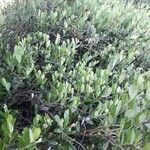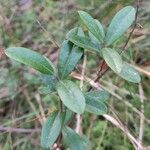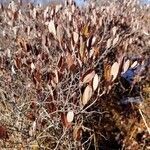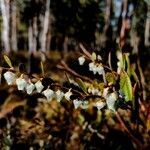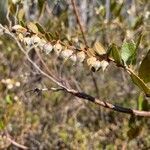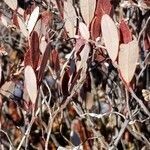Shrubs erect, 0.3–1.5 m tall. Twigs fulvous, densely lepidote and pubescent. Leaf blade oblong or elliptic-oblong, 3–4 × 1–1.5 cm, both surfaces with brownish scales, especially abaxially, base cuneate to obtuse, margin entire or inconspicuously denticulate, apex obtuse, mucronulate; upper leaves gradually smaller. Racemes 4–12 cm. Pedicel ca. 2 mm, densely pubescent; bracteoles apical. Petiole 1.5–2.5 mm. Flowers pendent. Calyx lobes ovate, 1.5–3 mm, pubescent and lepidote. Corolla white, tubular-urceolate, 5–6 mm; lobes recurved, ovate. Filaments glabrous. Capsule depressed-globose, 3–4 mm in diam. Fl. Jun, fr. Jul. 2n = 22.
Branching shrub to 1.5 m; petioles 1–3 mm; lvs oblong or elliptic or rarely obovate, 1.5–5 cm, minutely crenulate; pedicels 2–5 mm; cor white, 6–7 mm; 2n=22. In bogs, often forming dense thickets; circumboreal, s. to N.J., O., n. Ind., n. Ill., and (chiefly in the mts.) to N.C. Apr.–June.
An evergreen shrub. The leaves are thick and leathery. They are green above and have rusty scales underneath. The flowers are bell shaped and white. They occur in rows along new growth.
